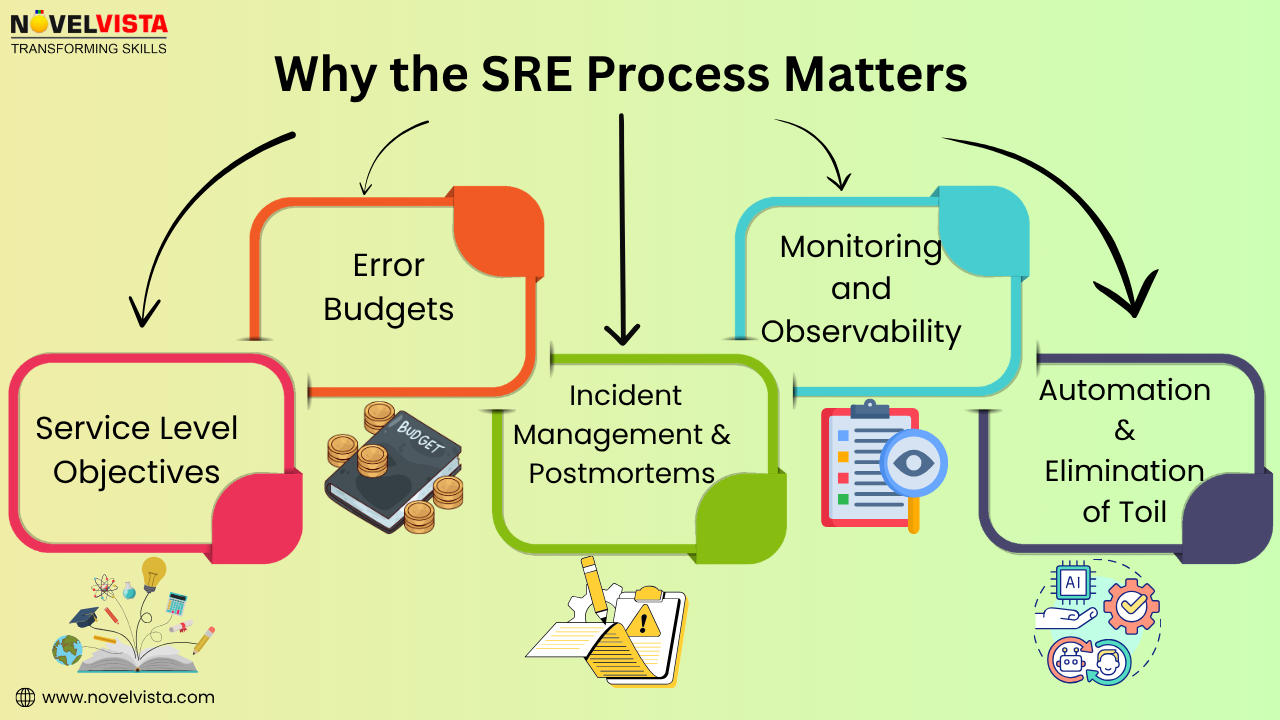
In today’s digitally driven world, ensuring the reliability and performance of applications and systems is more critical than ever. This is where Site Reliability Engineering (SRE) plays a pivotal role. Originally developed by Google, SRE is a modern approach to IT operations that focuses strongly on automation, scalability, and reliability.
But what exactly do SREs do? Let’s explore the key roles and responsibilities of a Site Reliability Engineer and how they drive reliability, performance, and efficiency in modern IT environments.
🔹 What is a Site Reliability Engineer (SRE)?
A Site Reliability Engineer is a professional who applies software engineering principles to system administration and operations tasks. The primary goal is to develop scalable and highly reliable systems that operate smoothly, even during high demand or failure scenarios.
🔹 Core SRE Roles
SREs act as a bridge between development and operations teams. Their core responsibilities are usually grouped under these key roles:
1. Reliability Advocate
Ensures high availability and performance of services
Implements Service Level Objectives (SLOs), Service Level Indicators (SLIs), and Service Level Agreements (SLAs)
Identifies and removes reliability bottlenecks
2. Automation Engineer
Automates repetitive manual tasks using tools and scripts
Builds CI/CD pipelines for smoother deployments
Reduces human error and increases deployment speed
3. Monitoring & Observability Expert
Sets up real-time monitoring tools like Prometheus, Grafana, and Datadog
Implements logging, tracing, and alerting systems
Proactively detects issues before they impact users
4. Incident Responder
Handles outages and critical incidents
Leads root cause analysis (RCA) and postmortems
Builds incident playbooks for faster recovery
5. Performance Optimizer
Analyzes system performance metrics
Conducts load and stress testing
Optimizes infrastructure for cost and performance
6. Security and Compliance Enforcer
Implements security best practices in infrastructure
Ensures compliance with industry standards (e.g., ISO, GDPR)
Coordinates with security teams for audits and risk management
7. Capacity Planner
Forecasts traffic and resource needs
Plans for scaling infrastructure ahead of demand
Uses tools for autoscaling and load balancing
🔹 Day-to-Day Responsibilities of an SRE
Here are some common tasks SREs handle daily:
Deploying code with zero downtime
Troubleshooting production issues
Writing automation scripts to streamline operations
Reviewing infrastructure changes
Managing Kubernetes clusters or cloud services (AWS, GCP, Azure)
Performing system upgrades and patches
Running game days or chaos engineering practices to test resilience
🔹 Tools & Technologies Commonly Used by SREs
Monitoring: Prometheus, Grafana, ELK Stack, Datadog
Automation: Terraform, Ansible, Chef, Puppet
CI/CD: Jenkins, GitLab CI, ArgoCD
Containers & Orchestration: Docker, Kubernetes
Cloud Platforms: AWS, Google Cloud, Microsoft Azure
Incident Management: PagerDuty, Opsgenie, VictorOps
🔹 Why SRE Matters for Modern Businesses
Reduces system downtime and increases user satisfaction
Improves deployment speed without compromising reliability
Enables proactive problem solving through observability
Bridges the gap between developers and operations
Drives cost-effective scaling and infrastructure optimization
🔹 Final Thoughts
Site Reliability Engineering roles and responsibilities are more than just monitoring systems—it’s about building a resilient, scalable, and efficient infrastructure that keeps digital services running smoothly. With a blend of coding, systems knowledge, and problem-solving skills, SREs play a crucial role in modern DevOps and cloud-native environments.
📥 Click Here: Site Reliability Engineering certification training program




















Write a comment ...